Ever wonder the science behind your cleanser? Well, wait no longer! Our Picky Expert Jenny (@derm.talk) has some major insight to how your cleanser works and even recommended cleansers for each skin type! Don’t miss out and keep on reading!
Why use a cleanser?
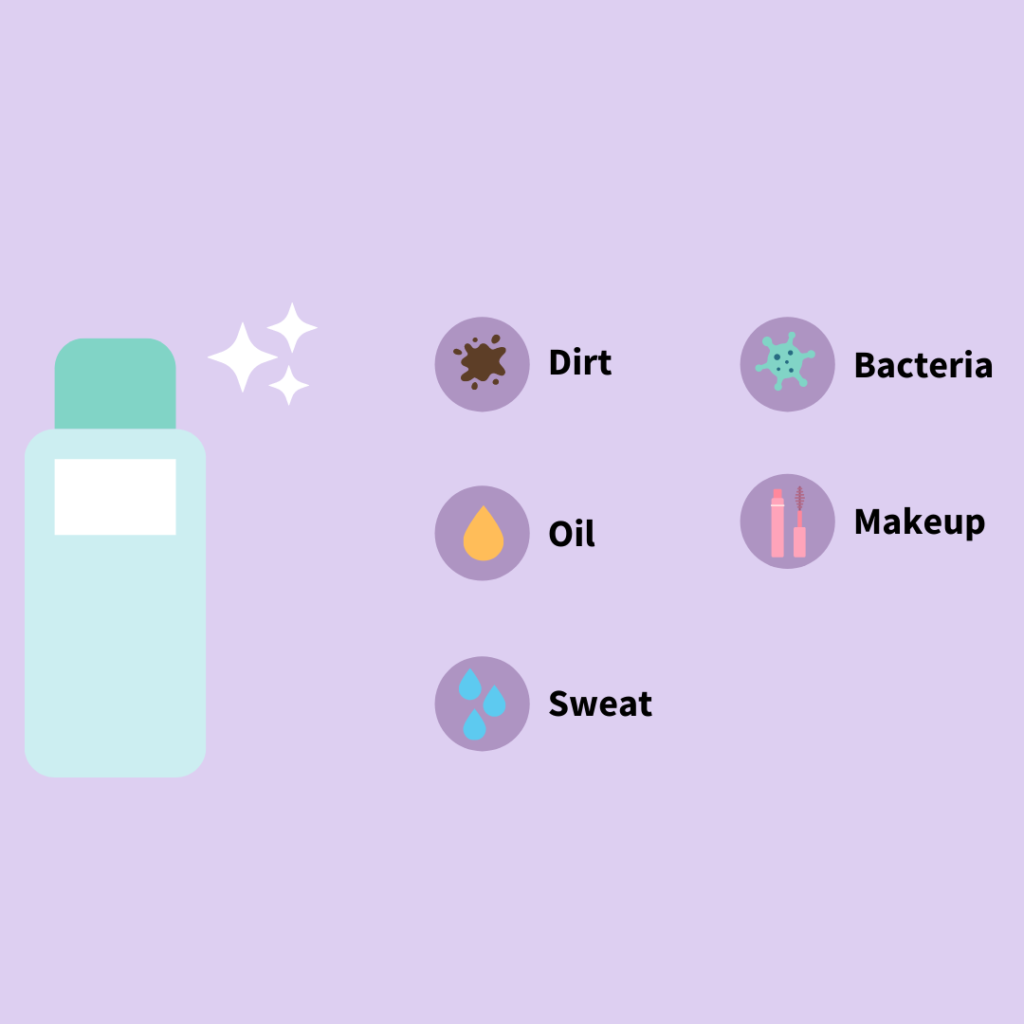
Cleansers are essential for removing all that dirt, oil, sweat and bacteria building up on your skin. Cleansers can clean by interacting with proteins and lipids of your skin and skin barrier. They can do this thanks to a primary active ingredient- surfactants!
Surfactants

What are they?
We’ve talked about these interesting active agents before. Surfactants are surface active agents with two parts: A water-loving head and an oil-loving tail. Also known as amphiphilic molecules! These agents are quite strong with removing impurities, dirt and oil from your skin.
Surfactants can determine the degree of cleanliness (and harshness) in a cleanser. And their ability to clean depends on the size and charge, along with its micelle formation. When the concentration of the formula reaches a high enough level, known as the critical micelle concentration, the mild surfactants form micelles.
Surfactant and the skin barrier
If you’re not careful, surfactants could cause your skin barrier some damage. This is because surfactants can interact with the protein and lipids in your skin barrier and mess with your skin’s natural function. Ultimately, causing transepidermal water loss, dryness, irritation and inflammation!
Types of surfactants
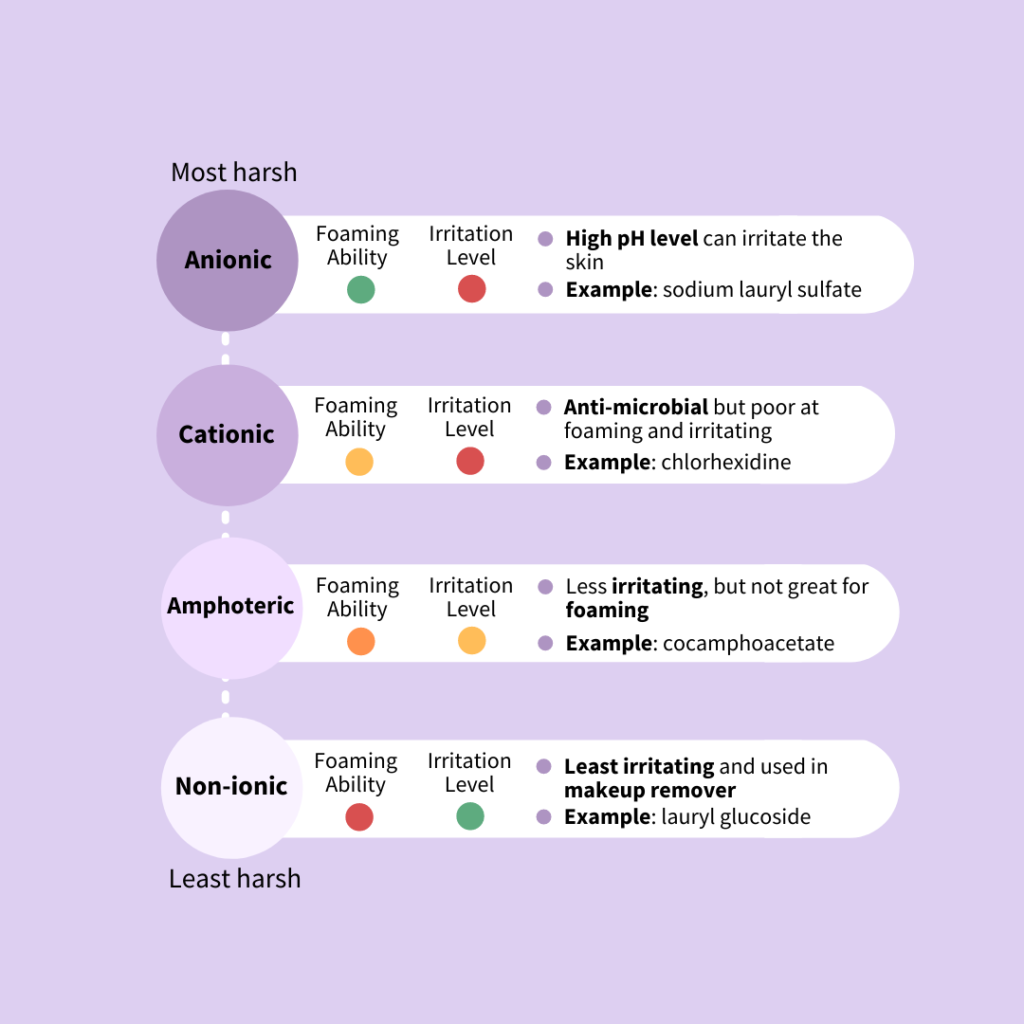
Based on how charged and big surfactants are, they can fit into one of these four categories! We’re listing them from the most to least harsh on your skin.
- Most harsh– Anionic surfactants: They tend to foam well, but at the cost of a high pH level which can irritate your skin. Some examples include sodium lauryl sulfate and alkyl ether sulfate.
- Cationic surfactants: These guys are antimicrobial -a plus- but foam rather poorly. This kind can be heavily irritating for the skin. Some examples of this type are chlorhexidine and benzalkonium chlorid.
- Amphoteric surfactants: Much less irritating, but not great for foaming. Sodium lauroyl isthionate, cocoamidopropyl betain and cocamphoacetate are a few examples.
- Least harsh- Non-ionic surfactants: This category is the least irritating and commonly used in makeup remover. On the downside they can be a bit pricy. Alkyl polyglucosides and lauryl glucoside are part of this group!
Types of cleansers
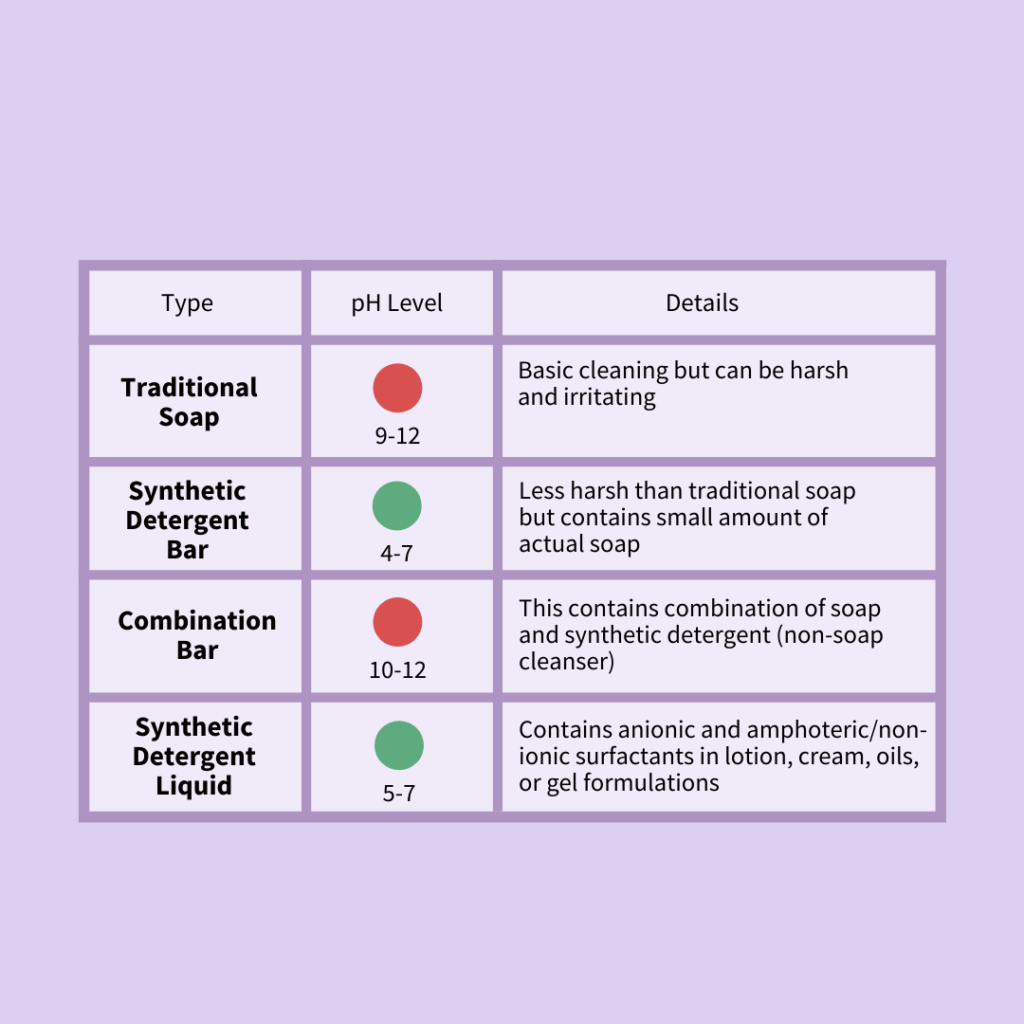
Cleansing is all about removing impurities and restoring a natural pH balance. Many traditional cleansers have a stronger formula of surfactants and therefore higher pH! Luckily with today’s technology, there are many new synthetic detergent, meaning non-soap cleansers, that are gentle and have a lower pH. Just to remind everyone, a healthy pH level sits between 5 and 5.5. Let’s take a look at some different types of cleansers:
- Traditional soap: pH 10-12. Basic cleansing but can be harsh and irritating.
- Synthetic detergent bar: pH 4-7. Less harsh than traditional soap but contains a small amount of actual soap.
- Combination bar: pH 10-12. This one is part soap and part synthetic detergent.
- Synthetic detergent liquid: pH5-7. Contains both anionic and amphoteric/non-iconic surfactants in lotion, cream, oils, or gel formulation
Cleanser by skin type
Finding a cleanser that works for you skin type is key! So we suggest first discovering what your type is, then see what our Picky Expert’s recommend for you.
- Combination/Normal: Synthetic detergent bar and liquid
- Oily: Foaming liquid cleanser
- Dry/Sensitive: Non-foaming with added ceramides, hyaluronic acid and petrolatum
- Acne-prone: Gentle cleanser with benzoyl peroxide and salicylic acid
Picky’s Picks
Not sure where to start? Our Picky Experts have a few suggestions!
Combination/Normal

Try La Roche-Posay Purifying Foaming Cleanser! La Roche-Posay’s cleanser is great for removing impurities in addition to makeup! A gel formula that cleans out that excess oil without stripping the skin or hurting your pH balance.
Oily

Picky Expert’s recommend Cetaphil’s Daily Facial Cleanser! Great for normal to oily skin types since it wipes that dirt away without stripping! This cleanser’s formula is non-comedogenic, hypoallergenic, and non irritating!
Dry/Sensitive

For those with dry or sensitive skin types, try the CeraVe Hydrating Facial Cleanser. Jam full of ceramides and hyaluronic acid to restore and retain moisture. Also non-comedogenic and fragrance-free!
Acne-prone

Struggling with acne? Then Picky Expert’s recommend a cleanser with salicylic acid, and La Roche-Posay Effaclar Medicated Gel Cleanser contains a whole 2% of salicylic acid! This cleanser is great for deep cleaning without irritation.
Already know what you want in a cleanser? Lucky for you the Picky app lets you customize how you search! Filter what you want and/or concerns and see what holy grail products appear. Head back to our blog for more skincare science content or to our Instagram!


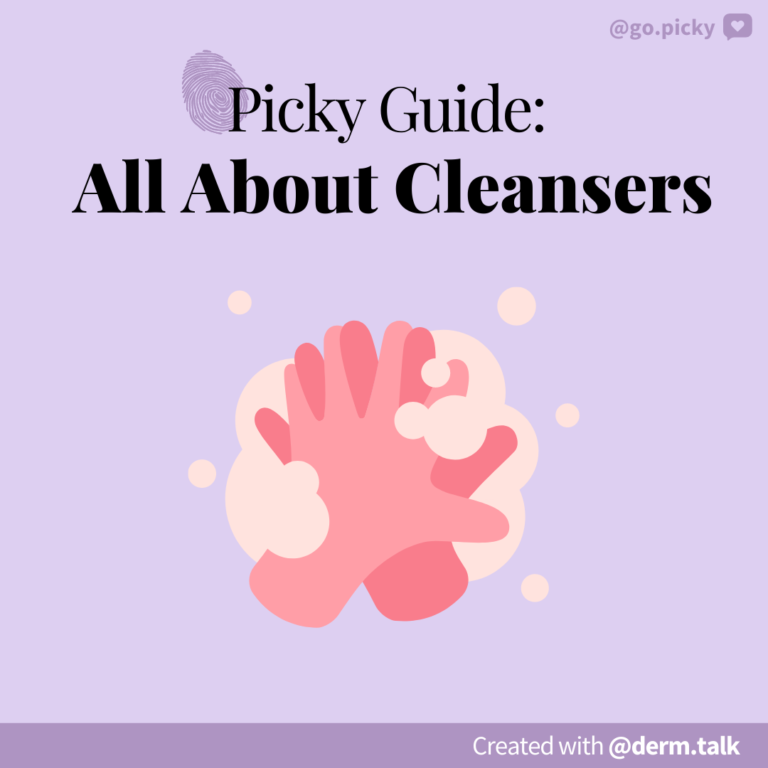

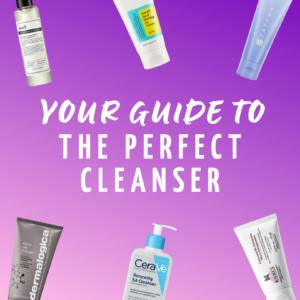

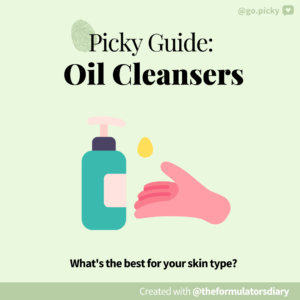













5 Responses
Is it okay to use a bar soap after using my foam cleanser?
I think it will be too drying for you
thank u. good to know this
Can you share more like this? It’s been extremely helpful to people.
Wow! You thoroughly covered everything in your post. I want to read more by you. Do you run any other blogs?